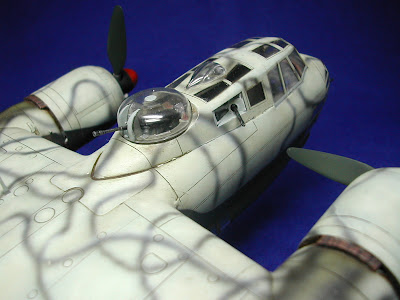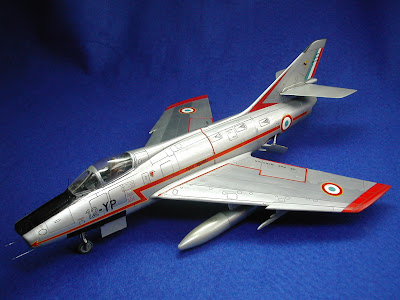
What got me going in the first place was a copy of 'Fighting Colours' that I bought years ago. It was essentially a catalogue of camouflage schemes for military aircraft, but I was instantly taken with not just the imaginative paint jobs on display, but the dramatic look of this small Russian jet. I began to appreciate Russian aircraft design and became a regular builder of their aircraft models. But I am digressing in my enthusiasm...
I did some of the work on this model late last year but became too busy to continue with it. A momentary lull in work has given me the chance to pick it up again. I'd chosen the Indian Air Force scheme from the Indo-Pakistan war in 1971 - a really interesting scheme and something of a challenge.
With the build largely complete, the model was undercoated and then sprayed in US dark green. After 24 hours drying time I was able to mask up. To achieve the 'pyjamas' effect, I decided to use Blu Tac.
 As you can imagine, I needed a great deal of it! It was very time consuming, but I felt that any other method would not produce the result I was after. I sat for hours rolling out long thin sausages of Blu Tac ( and then White Tac when the Blu ran out), carefully shaping them with the end of an old paint brush. Check the photo - the model in the grip of an alien face-hugger!
As you can imagine, I needed a great deal of it! It was very time consuming, but I felt that any other method would not produce the result I was after. I sat for hours rolling out long thin sausages of Blu Tac ( and then White Tac when the Blu ran out), carefully shaping them with the end of an old paint brush. Check the photo - the model in the grip of an alien face-hugger!
In spraying on the next colour I used a beige-green. This job had to be performed with great care. I needed to angle the airbrush to get in the corners - hundreds of corners - and apply it in layers to avoid rapid paint build up.
Later I carefully removed the Blu (and White) Tac. This revealed what you see in the last photo. It isn't perfect. Certain areas need a bit of attention, but it has the basics of a good job.
This MiG 21 now has its pyjamas on, I just need to sort out their fit.







